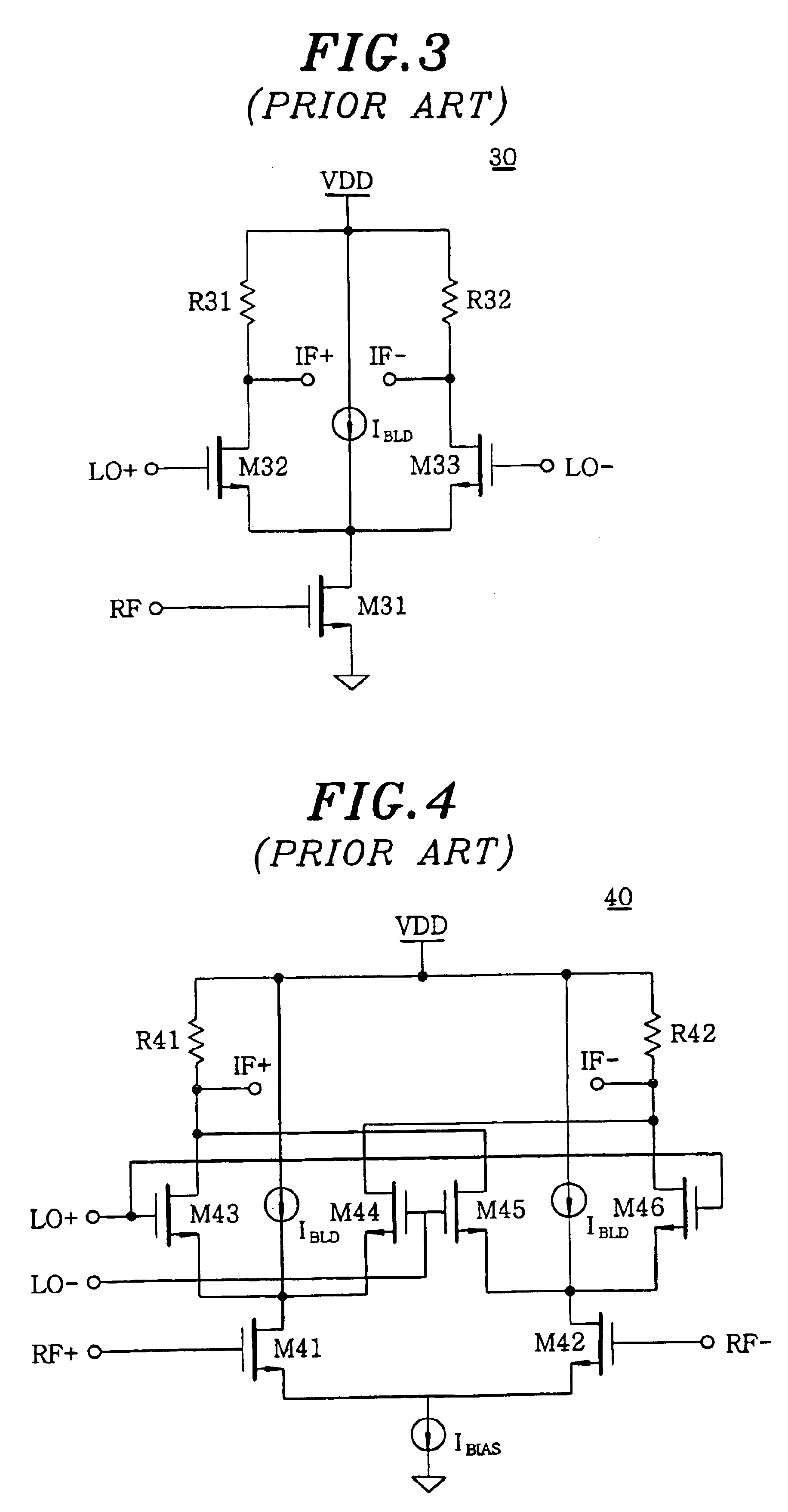Current-reuse bleeding mixer
a mixer and current-reuse technology, applied in the field of mixers, can solve the problems of reducing the performance of the single-balanced mixer, and reducing the performance of the mixer at the driver stage, so as to improve the conversion gain and improve the performance of the basically-nonlinear performance of the mixer. the effect of linearity, noise figure and isolation
- Summary
- Abstract
- Description
- Claims
- Application Information
AI Technical Summary
Benefits of technology
Problems solved by technology
Method used
Image
Examples
example
[0051]FIGS. 10 and 11 are circuit diagrams for simulation to compare the conventional single-balanced mixer 10 to the current-reusing bleeding single-balanced mixer 60. A performance comparison has been carried out between the conventional mixer 10 shown in FIG. 1 and the mixer 60 shown in FIG. 6. The 900 MHz down-conversion mixers are designed by using a 0.35 μm CMOS process. The 300 and 400 μm sizes are used for the n- and p-channel devices, respectively. The details of the bias conditions and the component values are shown in FIGS. 10 and 11 in the parenthesis. For example, M12 (300 / 0.35) shown in FIG. 10 represents that the MOS transistor M12 is an n-channel device of 300 μm width and 0.35 μm length. Also, M72 (400 / 0.35) shown in FIG. 11 depicts that the MOS transistor is a p-channel device of 400 μm width and 0.35 μm length. Both circuits are biased to operate at the same DC supply currents and voltages. The bleeding current is adjusted to be 50% of the total current.
[0052]Tabl...
PUM
 Login to View More
Login to View More Abstract
Description
Claims
Application Information
 Login to View More
Login to View More - R&D
- Intellectual Property
- Life Sciences
- Materials
- Tech Scout
- Unparalleled Data Quality
- Higher Quality Content
- 60% Fewer Hallucinations
Browse by: Latest US Patents, China's latest patents, Technical Efficacy Thesaurus, Application Domain, Technology Topic, Popular Technical Reports.
© 2025 PatSnap. All rights reserved.Legal|Privacy policy|Modern Slavery Act Transparency Statement|Sitemap|About US| Contact US: help@patsnap.com



